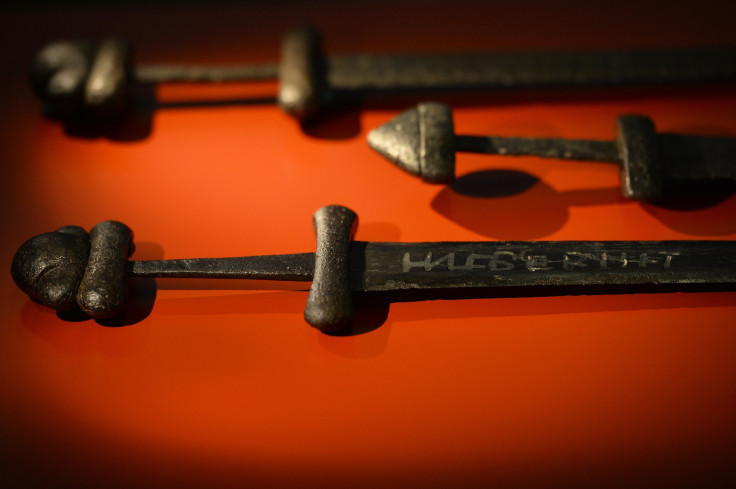Hiker Finds Ancient Viking Sword In Norway Estimated To Be 1,200 Years Old

Goran Olsen was resting during a hike along a road in the mountains of southern Norway in mid-October when he spotted something under a pile of rocks. It was iron and rusted, and it turned out to be a blade, but not just any blade. It was a 30-inch Viking sword that was later estimated to be 1,200 years old, and despite the rust, it was in surprisingly good shape.
The Hordland County Council confirmed last week that the sword dated back to 750 AD, CNN reported. Per Morten Ekerhovd, the conservator for the county, said it could have come from a burial site or belonged to someone traveling who had died en route or had an accident.
"It's quite unusual to find remnants from the Viking age that are so well-preserved," he told CNN. "It might be used today if you sharpened the edge," he said. The fact that the blade was in such remarkably good condition after 1,200 years was likely due in part to the fact that frost and snow cover those areas for at least half the year and that summers there are relatively dry, Ekerhovd said.
Hiker stumbles upon 'extraordinary' millennia-old Viking sword https://t.co/5GVsRxjboN
— The Guardian (@guardian) October 28, 2015
The blade, which was found without a handle, had likely belonged to someone wealthy, given how expensive iron was during Viking times, according to Ekerhovd. Other experts had similar theories.
"Generally if you had a sword, that tends to be a very high-status item," Alexandra Sanmark, a Viking expert at the Scottish University of the Highlands and Islands, told the Guardian.
In recent years, climate change has led to the discovery of more and more ancient artifacts that were once preserved under glaciers and thick layers of ice. In 2013, scientists found a tunic from a pre-Viking era in a glacier in southern Norway. As ice melts and glaciers retreat, the thaw has also exposed bow and arrows, hunting sticks, shoes and even preserved bodies from civilizations and communities that existed hundreds, sometimes thousands, of years ago.
"It's like a time machine," Lars Piloe, a Danish archeologist, told the Guardian in 2010. "The ice has not been this small for many, many centuries," he said.
Archaeological rescue work at the glaciers in Norway. Ancient artefacts melting out of the ice due to climate change https://t.co/4rZ51qVNzB
— Lars Piloe (@Ironageman) August 11, 2015
While these new discoveries afford archeologists fresh insight into ancient cultures, they also pose a grave challenges. Having been preserved in ice for millennia, these fragile remnants are at risk of quickly disintegrating without it, the Guardian has reported.
© Copyright IBTimes 2025. All rights reserved.






















